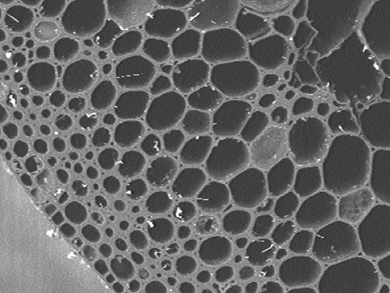Activated carbon is an attractive electrode material due to its large surface area and good conductivity. The production of activated carbon often involves several steps, including the use of harmful activating agents during carbonization.
Jiayan Luo, Tianjin University, China, and colleagues have taken advantage of the fact that many plants naturally contain alkali ions that can replace other activating agents. Starting from lotus plants, the researchers obtained highly porous carbons in a one-step pyrolysis under nitrogen. The porosity of these carbons is significantly different when either stems (1610 m2 g–1) or leaves (1039 m2 g–1) of the plant are used. This effect is correlated with the different amount of alkali ions present in the different plant organs and is also demonstrated in other plants with an inhomogeneous distribution of alkali ions (e.g., asparagus lettuce and celery).
The team used cyclovoltammetry to show the applicability of their materials as supercapacitor electrodes. They found high specific capacities of up to 39.4 µF cm–2 in carbons derived from celery leaves.
- Biomass Organs Control the Porosity of Their Pyrolyzed Carbon,
Yao Zhang, Sisi Liu, Xiaoyu Zheng, Xiao Wang, Yue Xu, Haoqing Tang, Feiyu Kang, Quan-Hong Yang, Jiayan Luo,
Adv. Funct. Mater. 2016.
DOI: 10.1002/adfm.201604687



